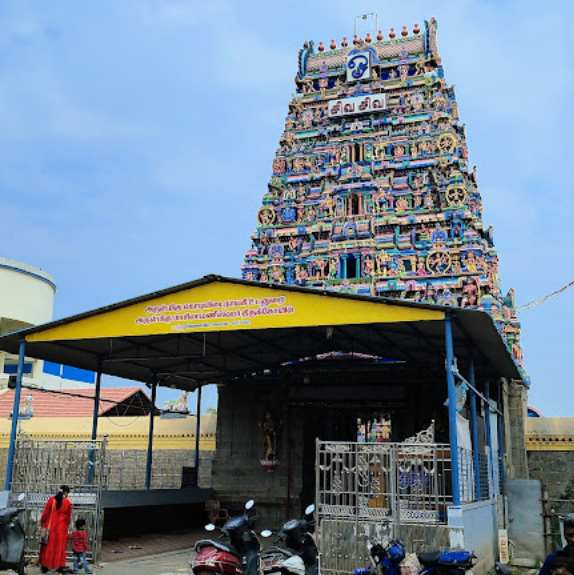The region where the Masilamaneeswarar Temple is located was once infested by forests inhabited by two demons, Vanan and Onan, who tormented righteous sages. A king named Thondaman waged war against the demons but was defeated. While returning, the king's elephant got caught in creepers of a jasmine plant. As the king tried to cut the creepers, he noticed them bleeding. Fearful, he dismounted and discovered a Shivalinga beneath the soil.
Realizing that he had wronged Lord Shiva, the king attempted to end his life. However, in His haste to protect the king, Lord Shiva appeared before him, without inviting Goddess Ambica, and reassured him that despite the injury, He would be gracious to all. Ambica later joined Lord Shiva, and her shrine now stands to the right of the Lord.
Lord Shiva sent Nandhi, the bull vehicle, along with the king’s army to defeat the demons. Nandhi brought two pillars made of the Vellrukku tree, which were placed in the temple built by the king. These two pillars are still present in the temple today.
Administration History :
The temple has a rich history of patronage and administration under various dynasties, including the Cholas, Pandyas, Vijayanagara rulers, and Nayaks, as evidenced by numerous inscriptions detailing their contributions to its maintenance and development. Lands, jewels, and other endowments were donated to sustain the temple's rituals, festivals, and upkeep. Currently, the temple is maintained and managed by the Hindu Religious and Charitable Endowments Department (HR&CE) of the Government of Tamil Nadu, ensuring its preservation, daily poojas, and periodic renovations.
